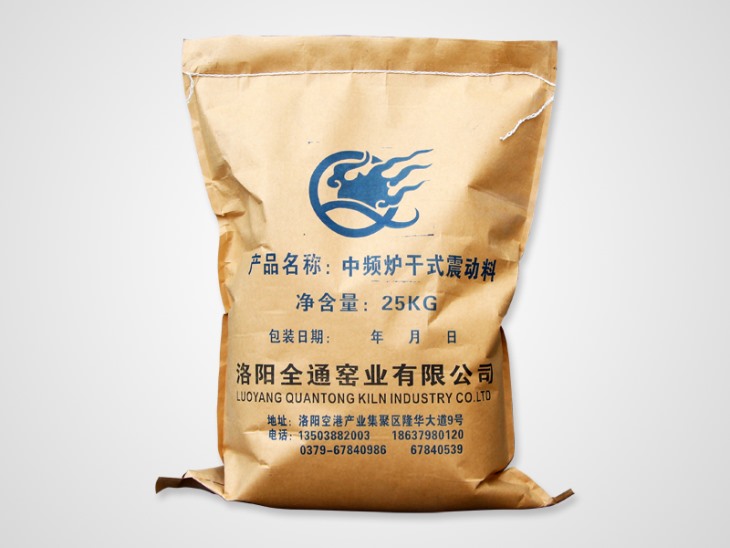Introduction to the difference between dry vibrating material and ramming material
Dry vibrating material and ramming material are new types of refractory castables developed over the years. They are developed under the basic theory of castables. Its key technology lies in the self-reaction and self-sintering products at high temperature. It is a high-temperature phase substance, and its particle gradation and binder are also very important. This castable was initially brought with the introduction of electric furnaces, and it didn't take long for it to be localized.
Dry vibrating material is a dry refractory mixture without adding any liquid. After vibrating to obtain a dense construction body, it can be used directly without maintenance and baking. It is called dry ramming material. The process principle is: Various load sintering agents are added to ensure the chemical reaction between the materials at high or low temperature to obtain high-temperature phase products and ceramic bonding. The particle gradation of the materials is carefully configured to ensure that the particles can move quickly under the effect of small vibration force , Fill all kinds of open space without remaining and insufficient materials at all levels, and then a higher bulk density can be achieved.
Dry vibrating materials are classified according to material grade and application site. According to the type of material, they are divided into siliceous, corundum, magnesia, magnesia-calcium, magnesia-aluminum, magnesia-aluminum spinel and other dry vibrators. According to the application part, it can be divided into electric furnace bottom dry vibrating material, power frequency furnace melting ditch dry vibrating material and center bag operation lining dry vibrating material, etc.
Finally, after the construction of dry blasting material and ramming material is completed, a layer of thin steel plate needs to be laid on it to avoid damage to its appearance when loading scrap or mixing molten iron. When producing the first few furnaces of steel , It is necessary to observe the appearance of the furnace bottom working layer. If there is a pit, it should be repaired with the same material in time.
Luoyang Quantong Kiln Industry Co., Ltd. is a comprehensive high-tech company integrating R&D, production, sales and construction services. It is a high-tech enterprise in Henan Province and an IS09001 quality assurance system certification enterprise.
Facing the market demand and customer expectations, the company is committed to independently and cooperatively developing various high-tech amorphous refractory materials and products, and strives to expand their application fields.

Related News
- Introduction of construction method of ramming material in intermediate frequency furnace
- How to choose the material of furnace lining
- The difference between rammer and castable
- Application direction of intermediate frequency furnace refining
- Introduction to the construction method of dry ramming material
- Do you know the production process and control points of breathable bricks?
- The application of argon blowing technology at the bottom of the intermediate frequency furnace
- Method for prolonging service life of intermediate frequency furnace lining
- In addition to diffused breathable bricks, there are those types of breathable bricks
- What are the advantages of coil cement
- Analysis of the characteristics of diffused breathable bricks
- What are the good coil glues?
- Furnace lining manufacturers tell you the steps of the oven
- What should be paid attention to in the knotting process of wear-resistant ramming material
- Refractory manufacturers tell you the reason for the damage to the boiler lining
- Introduction to the method of improving the argon blowing rate of ladle permeable bricks
- Ramming material manufacturers teach you how to test the performance of refractory materials
- Cause Analysis of Damaged Furnace Lining
- Influence of Furnace Lining Material on Pre-furnace Temperature of Copper Alloy
- Brief introduction of furnace lining baking process


